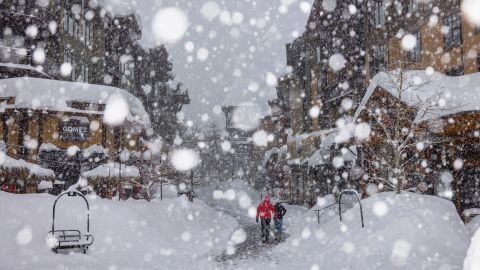CNN
—
For three years, California has been in desperate need of rain. Years of unfavorable precipitation trends and more intense heat waves have fed directly to the state’s unrelenting, historic drought that has triggered dire water shortages.
But the past several weeks of rain and snow have “significantly reduced” the state’s drought intensity, according the US Drought Monitor’s latest report.
Extreme drought — the second-highest designation on the drought monitor scale — has nearly disappeared, according to the weekly analysis published Thursday. It is now confined to less than 1% of the state near the border with Oregon.
Only two weeks ago, more than one-third of California was in this extreme drought category.
The drought is not over for the state, however. Despite the epic rain and snow, more than 95% of California remains in moderate or severe drought, since moisture deficits have been baked into the landscape in some areas over the past three years.
Richard Tinker, author of this week’s drought monitor at the Climate Prediction Center, said there’s still quite a large deficit to make up as a result of the prolonged drought.
“These things always look very impressive when they happen — and this one certainly is impressive — but down the road, depending on how things go, they might not be quite the boon that you think that they are at the beginning,” Tinker told CNN. “But from a reservoir standpoint, we’d rather have it than not have it.”
The recent storms have been replenishing the state’s water supply, according to the state Department of Water Resources. California’s two largest reservoirs — Shasta Lake and Lake Oroville — have seen steep climbs and are inching closer to their historical average during this time of the year, which officials say is a much-needed improvement after remaining at critically low levels in the past year.
“Good news is that [the reservoirs] are off historic lows,” Michael Anderson, climatologist with the state’s Department of Water Resources told journalists Wednesday. “The challenge is that they still have a lot of recovery to make before they would be back to normal operating conditions — so something to be mindful of.”
…
Click Here to Read the Full Original Article at CNN.com – RSS Channel – HP Hero…

